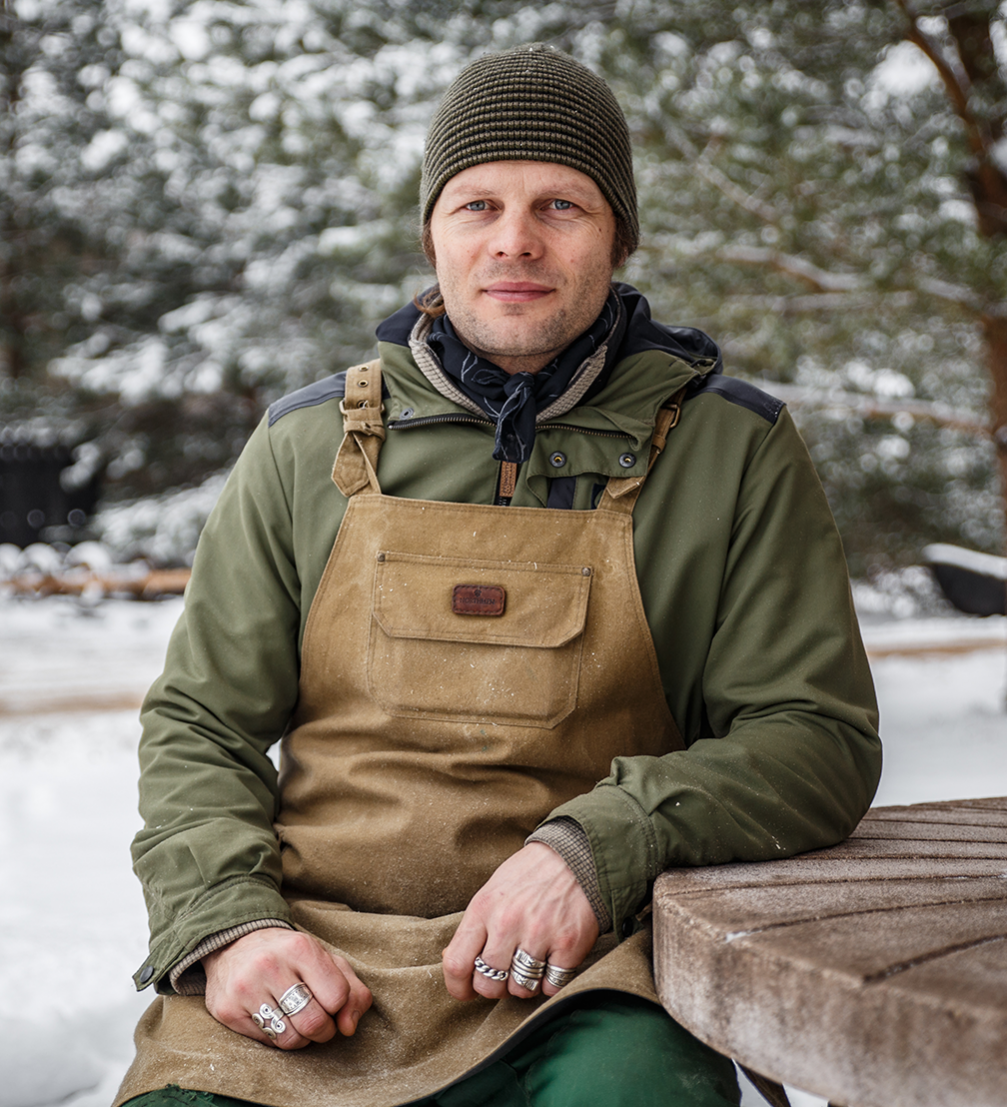
The work of Rihards Vidzickis is a perfect merger of seemingly different industries — craftsmanship, science and tourism. Having studied the nuances of woodcraft for a lengthy period of time, he then went on to study for a doctoral degree in Engineering from the Riga Technical university. At the same time, Rihards set up the Vienkoči Park in Ligatne, with the Woodcraft Museum as its central object. Rihards talks about wood, and particularly solid wood pieces, with great enthusiasm, but he also has something to say about craftsmanship and its relationship with design in a broader sense.
The idea of creating a Woodcraft Museum came to Rihards in 1999, when after graduating from the Riga Secondary School of Crafts, Faculty of Woodwork, Rihards began his studies at the Riga Technical University. In this Rihards was supported by his father, a wood craftsman himself, who not only encouraged his son’s interest but had also gathered a solid collection of pieces to start an exposition. The nearly ten–hectare wide territory under the name of Vienkoči Park has been open for visitors for over 10 years. When we visit Rihards on a snowy winter day together with the photographer, he is showing off his museum collection and tells us that autumn is usually the high season at Vienkoči Park. At the same time seasons don’t play as big a role in his work as weather conditions. Rihards is observing a natural rhythm. If it is snowing or raining outside, he works indoors. If not, he is sawing and carving outside. The master’s signature pieces are made of one–piece wood — log boats, kneading troughs and other bowls. Although this seems very niche, Rihards is not lacking in clients. He is one of the «Northmen» craftsman guild members, and the majority of pieces he creates are commissioned from abroad.
You mentioned in one of your interviews that the popularity of woodcraft is growing all over the world. How would you explain this and why is wood still so important to people as a material?
It is difficult to give you one specific answer. As a material wood has been well known historically, it is all around us in nature and it is pleasant to work with. In southern countries, stone materials are used quite a lot, for stone is cooler and more suitable for a hotter climate. Wood is also not as readily available, yet it is still being used. Wood works well as a thermal insulator — on a cold winter day we can sit down on a wooden bench without getting cold and equally it does not heat up during summer. It is suitable for all climates — this is one of the reasons for its popularity. Moreover, it is a natural material. Nobody would want to sit at a plastic table at home!
When it comes to the growing popularity of woodcraft… that is quite fascinating indeed! In woodcraft, you would always go for the best possible quality. And now industrial production has taken quality up to the point that it is no longer attractive. We sometimes look at a wooden object and can no longer distinguish it from plastic. For today manufacturing of plastic is so advanced, it can imitate nearly anything. You have wooden windows, but only an expert can tell if this is actual wood, judging from specifics and wood joints. You cannot tell anything by touch.
Objects made by a craftsman have their own character and texture which comes from his hands. They tell their own story — the object is made by a particular master or a group of masters in a particular workshop at a certain point in time. The customer senses a stronger link, which allows acting upon customers’ wishes. This is where a partnership emerges between a master and a client. These would be my reasons for the increasing demand for craftsmanship.
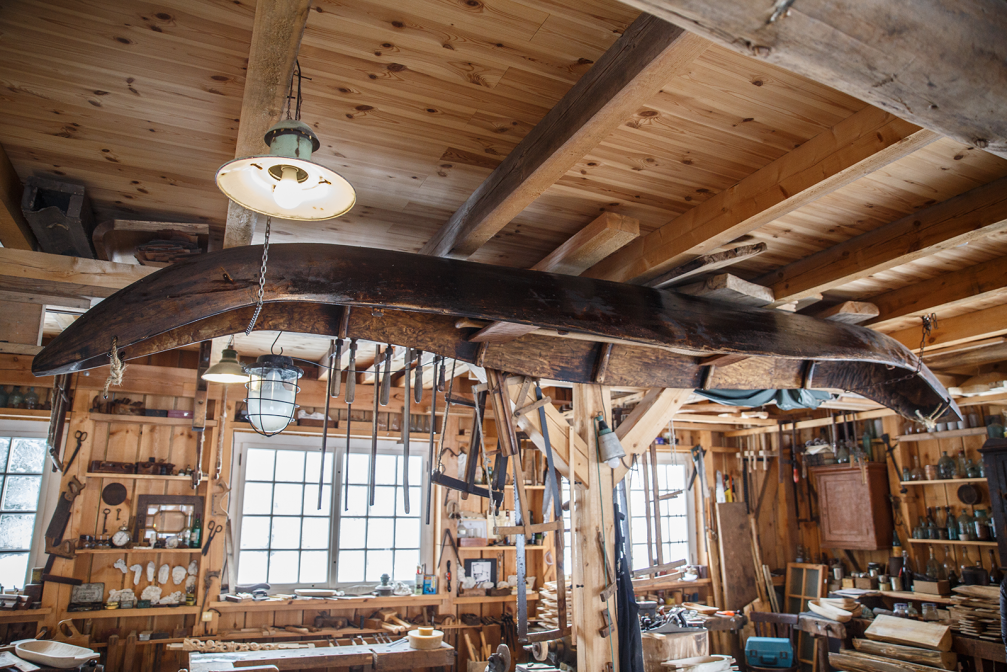
How did you decide to work with single–piece wood? What are their specific features?
Ever since childhood I’ve enjoyed the Ethnographic Open–Air Museum and all of its historical exhibits. I thought there was something mystical and intriguing about log boats. Vilnis Kazāks, the ex–president of the Latvian Chamber of Crafts, who was my lecturer at the university, was keen on log boats. Because of him, I made my first log boat and that’s how it all started. The name of the park grew out of this interest.
Essentially one–piece wood crafting means making objects fully or largely made out of a single piece of wood. It is both an interesting and a time–consuming process. Everything is made out of green, wet wood, which dries during the work process. Green wood is not as hard and much easier to work with. Bread kneading troughs are made of linden and aspen trees and other bowls are made from other leaf trees. I have recently started making more use of bird–cherry trees, the texture of which is similar to rowan trees. All of the bowls, except for the kneading trough, are treated with natural materials, mostly bee products. I make my own propolis tincture, wax and linseed oil. Now I am slowly developing the technology of treating wood by burning it.
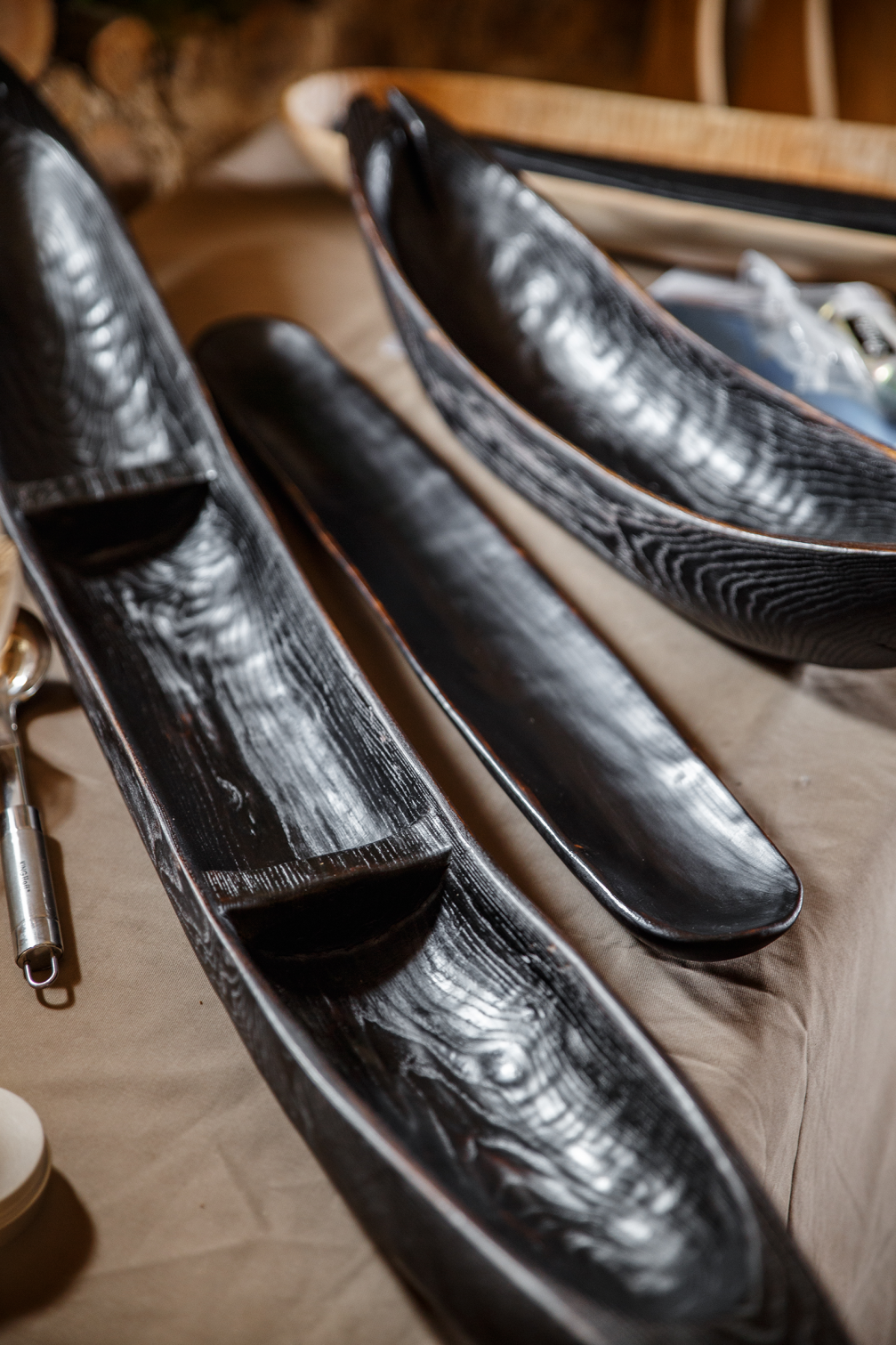
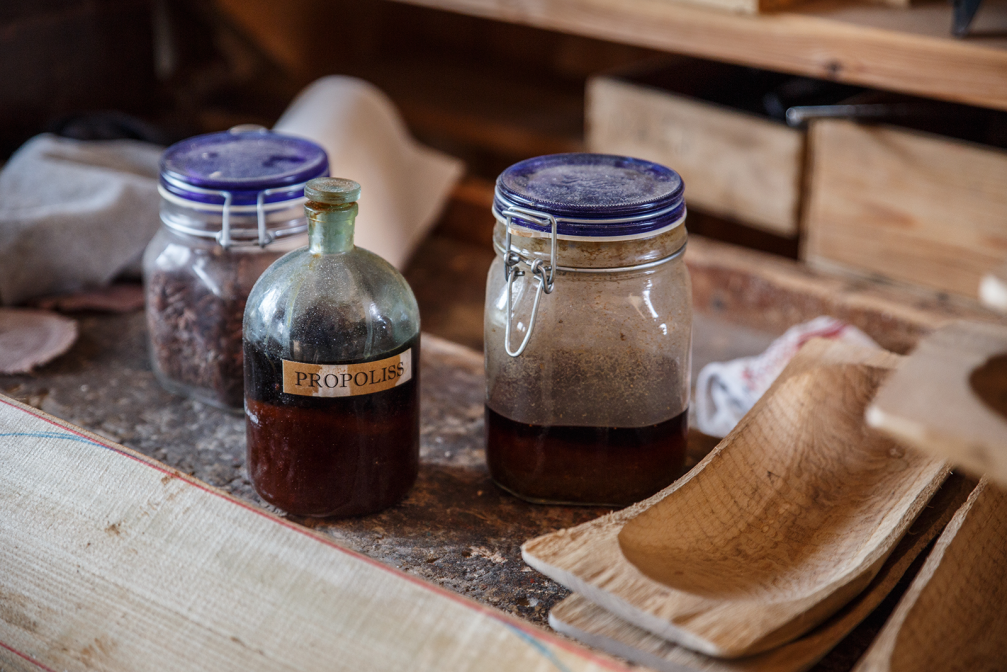
How are your works purchased and by whom?
I am one of the craftsmen in the «Northmen» guild — the majority of bowls are ordered via our website. Commissions usually come in from abroad, mostly from the US, where people have an interest in all kinds of pieces. The last bowls I made travelled to France. Sooner or later all of the bowls find a home. Many kneading troughs are sold here in Latvia — they are used for both bread baking and decoration. During the tourist season, we have visitors who stop by and buy something. Some bowls go to Latvian restaurants for professional use. We have good partnerships with the restaurants «Restorāns 3» and «Trīs Pavāru restorāns», who give us constant feedback as well. I find feedback important, for it allows me to improve technology and finish, and to know how the bowl is being used. I test things out quite a lot — I once kept pickled beets in a bowl for 24 hours. Nothing happened. What I am saying is, you need to know how to look after a wooden bowl for it to serve you well.
I am no longer attending fairs and I do not take up private commissions like furniture. I cannot work in all possible directions.
It is important for me to enjoy what I do, to take pleasure in it and to do it whenever I wish to.
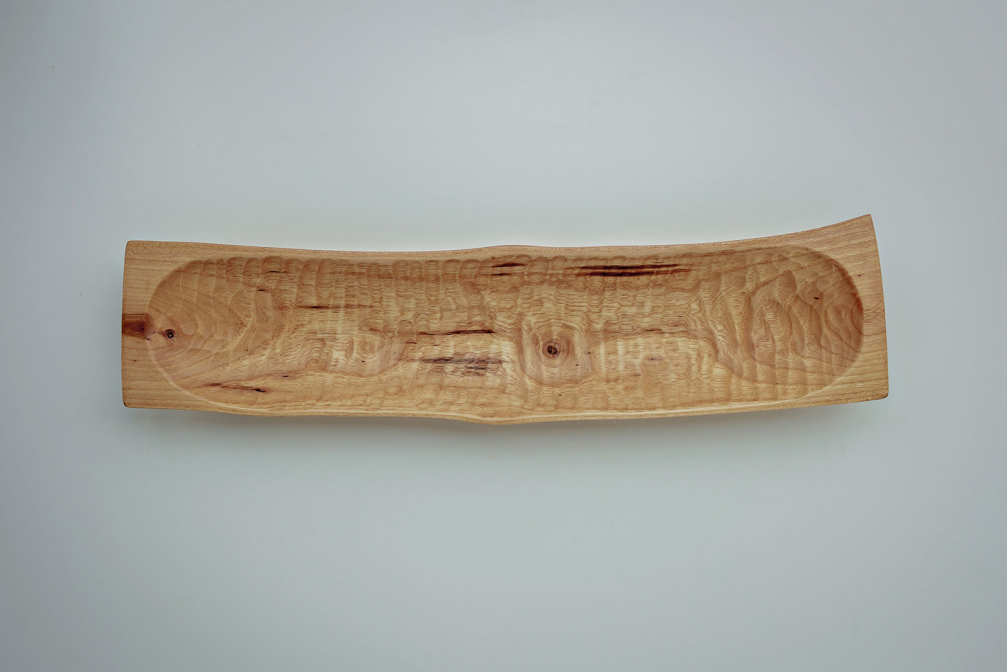
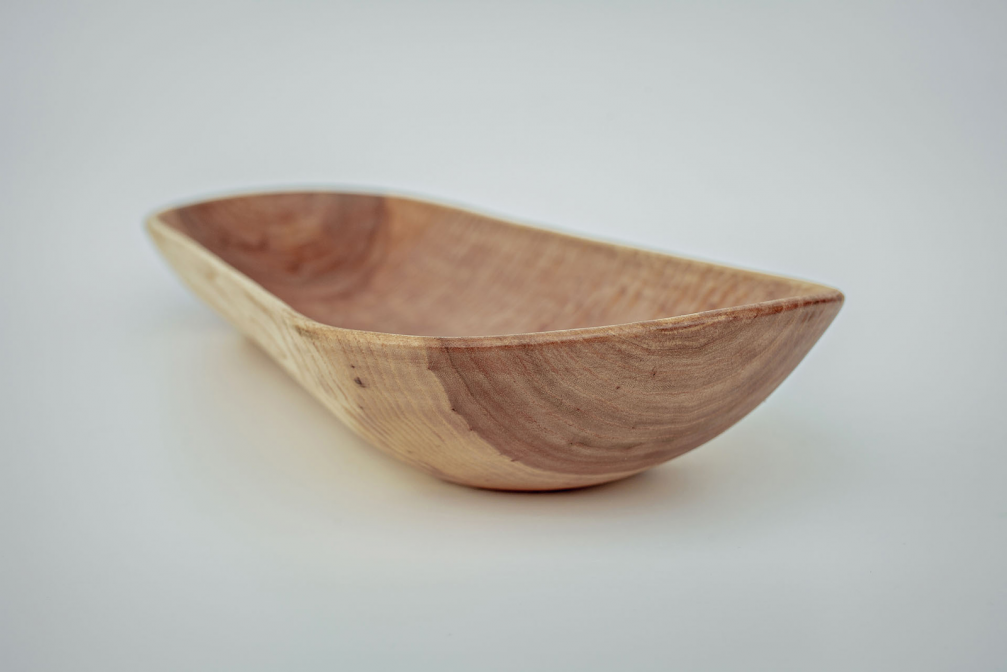
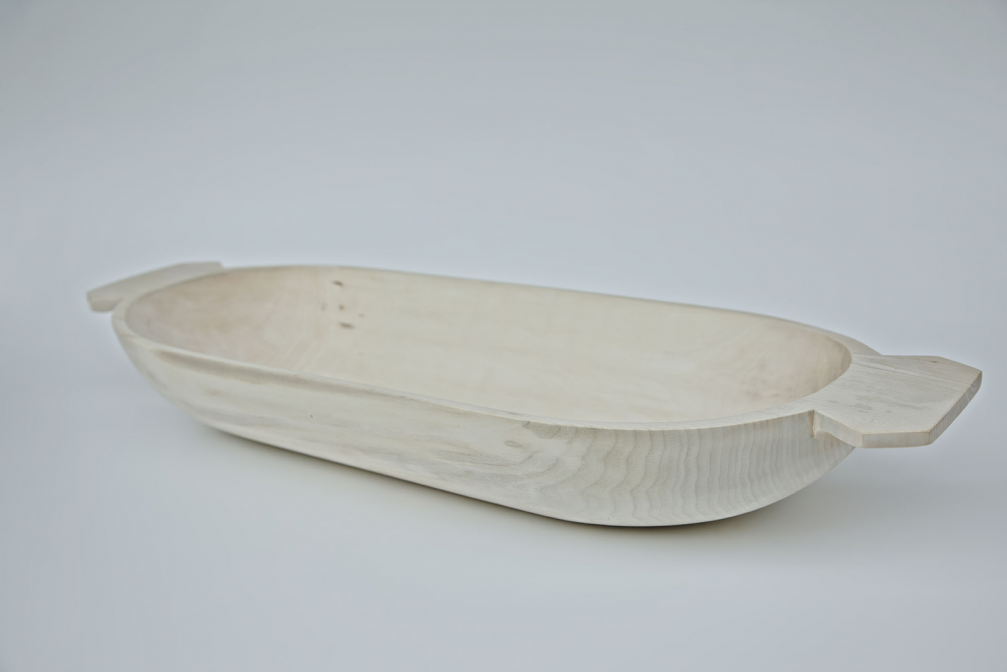
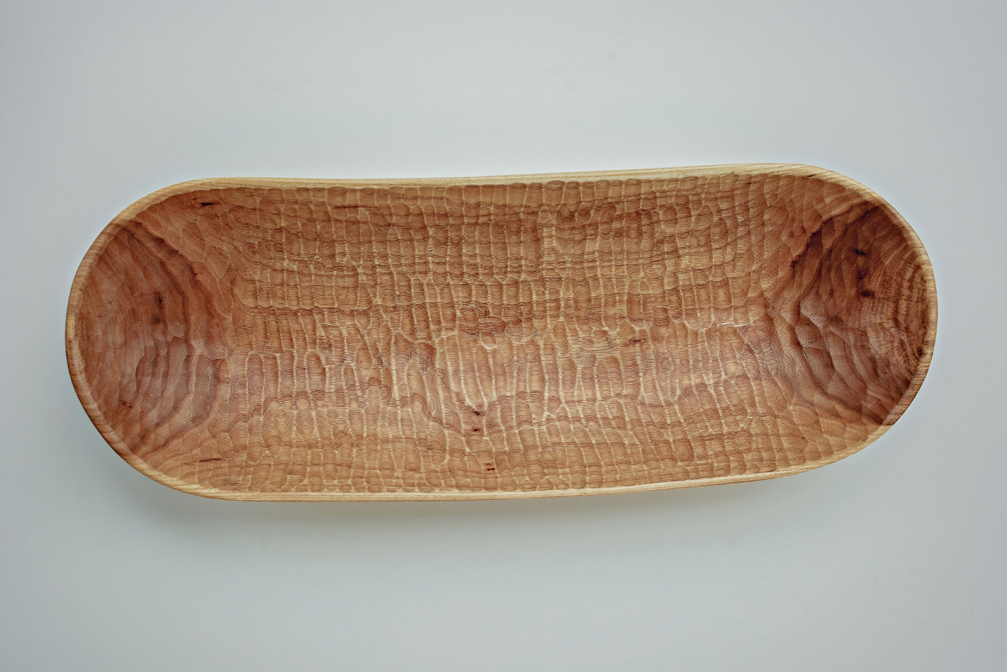
What gives you more pleasure — the work process or its results?
Those are moments when I am creating something new. The very process until I come to its result. Of course, if it happens to be a success, I am most certainly pleased. Even when you think something similar has been done before, the difference lies in the very nuances. The deeper you go into this field, the more important role is played by nuances and the process of revealing them.
Professional growth, in my opinion, is a normal process. For instance, I had been working with wood for a long period of time before I started making single–piece wooden bowls a few years ago. It took one and a half years for me to realize I had grown to the point that I truly understood this field. And even then, there is not a moment I can fully say — here, this is it. There is always something new, something to improve or to discover.
How do you see craftsmanship in Latvia today and what is your take on its future?
Something is not right with craftsmanship these days. Neither the educational institutions nor state policy is particularly oriented towards its development. The Riga Secondary School of Crafts, where I graduated from the Faculty of Woodwork, is now renamed Riga Art and Media College. What often happens today is everyone becomes some sort of «designer», but the very essence on which design objects, materials and functionality is based, is something completely alien to them. They are focused on the visual aspects, but the foundations are missing.
What characterises high–level craftsmanship? The wood products, the little items you can widely see at fairs and at souvenir shops, in my opinion, give the wrong impression about this industry.
The cornerstone of craftsmanship is skills. You can gain them from a craftsman or learn them from your own mistakes. At craft schools, the teachers are largely craftsmen, too. When you outgrow your teacher (and every good craftsman should outgrow his own teacher at some point), the next level is to start learning from your own mistakes, for you have already learnt from those of others.
Laser cutting, laser engraving and CNC milling are mini industrial machines that do something, but this is not a craft.
You have a doctoral degree in Engineering. What gave you the motivation to pursue a scientific career next to your practical work?
My main motivation was the very process of finding something out. And scientific activity coincided with the path I had already chosen (in 2012 Vidzickis defended his doctoral thesis «Cutting Technology of Objects for the Outdoor Environment» — V.V.). Had my doctoral degree been done in a completely different field, I would not have gone this far. My colleagues are just the same. Part of them became professors, but I don’t need that. I manage my own institution, while still being in partnership with the university.
Is working with students your way of keeping future generations interested in craftsmanship?
Passing your knowledge on is important. I used to work with students more when my everyday was spent at the Riga Technical University. Now I get more visitors who are interested in all things related to wood. What they will do with this knowledge and skills, remains to be seen. For instance, there is a doctoral student from the Riga Technical University, who started studying hand carving tools during her Master’s studies. She visits me, tries these tools out in practice. She is not going to make single–piece wood objects, but she wants to get to know woodcraft through its tools. We have a large problem with terminology in Latvia — there are old words and foreign words, and there are lots of tools that do not have a Latvian name at all, or if they do, they are completely wrong.
Last summer I became involved with MAD (International Summer School of Design MAD — V.V.), I was consulting students who had chosen to work with solid wood. As far as it was possible, our ideas were successful. Working with single-piece wood requires specific tools, which is quite expensive. And depending on what you are making, a wide range of tools are required. I do have such tools that I got from Jēkabs (Jēkabs Dimiters — craftsman, founder of the «Northmen» guild — V.V.), which were custom–made to meet my needs.
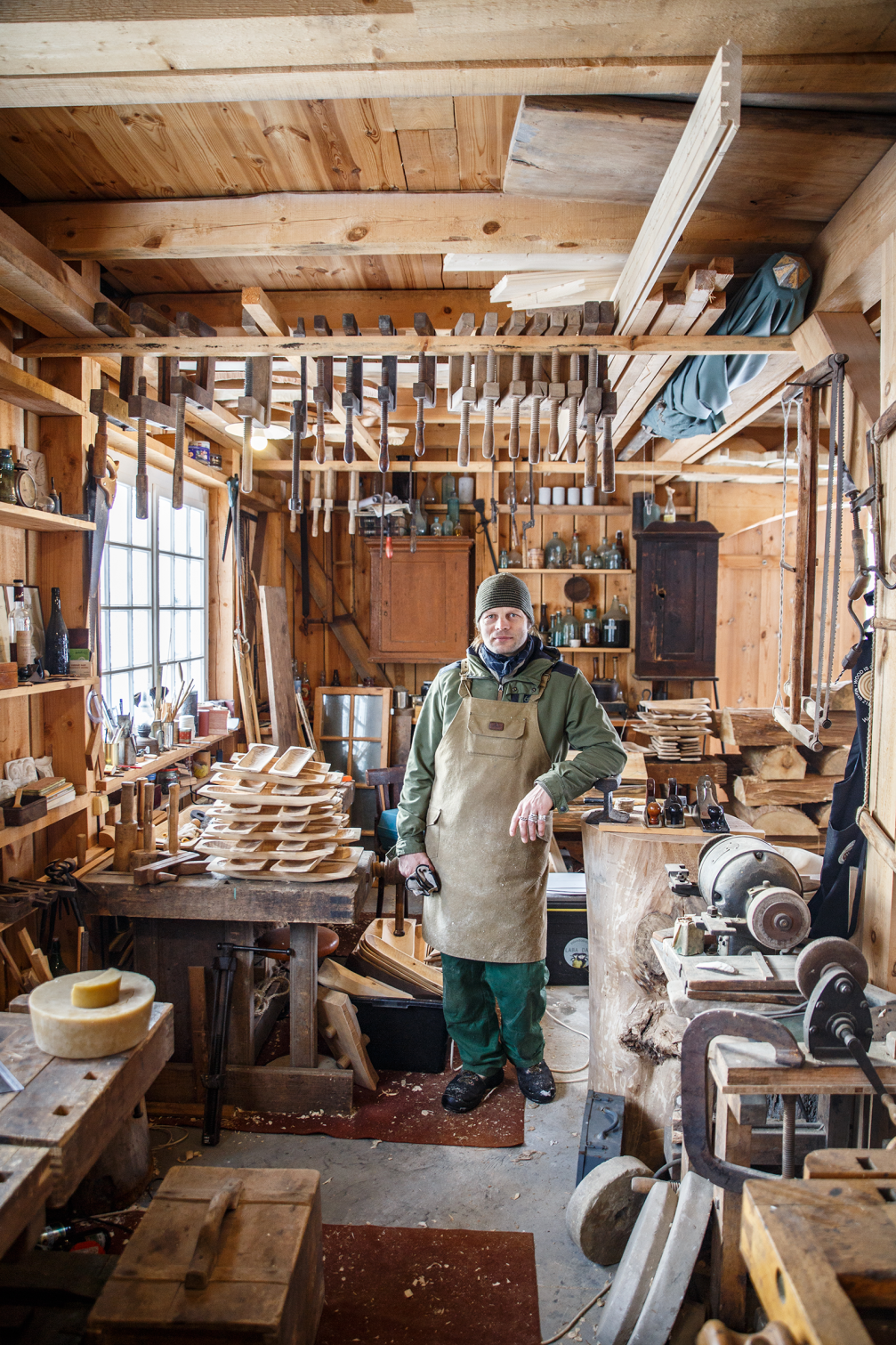
You have been involved in the organization of World Wood Days. Could you please tell us more about this event?
World Wood Days is a regular international event, which typically takes place in countries with deep roots in craftsmanship. It started out in Tanzania, then came China, Turkey and Nepal. Last year the World Wood Days were held in Los Angeles. Americans are crazy — on a hobby level, their craftsmanship is really advanced. People may be doing something completely different professionally, and spend their free time working with wood at a very advanced level. This year the World Wood Days are taking place in Angkor Wat, Cambodia.
This event brings together woodcutters and craftsmen from all over the world. Each country has its own specifics — Africans focus more on sculpture, China has the full spectrum from sculpture to furniture. Four years ago, I visited the World Wood Days in China, the organizers of which called to hold regional events. This is why the World Wood Days have now been taking place at the Vienkoči Park for three years in a row, and this has become a tradition for the students. The environment is very suitable for this, except maybe for the weather conditions — the World Wood Days are held in March.
Vienkoči Park features the very first sand–bag house in Latvia. How did this idea to build one come about?
This idea was born in 2008 in a group of some likeminded craftsmen. Before that, we used to gather in a nearby log house from Latgale, but we wanted something slightly bigger. The basic idea was to build it from natural and recycled materials. The foundations are made of fodder sacks filled with sand and clay. We used glass bottles and ad banners for hydro isolation. We wanted to build a house in a style that nobody else had attempted before in Latvia. Now there are a few similar cases, but the ones who made them would come to visit here first. When we were building this, there was only one other person in Latvia who was making a house from straw bales.
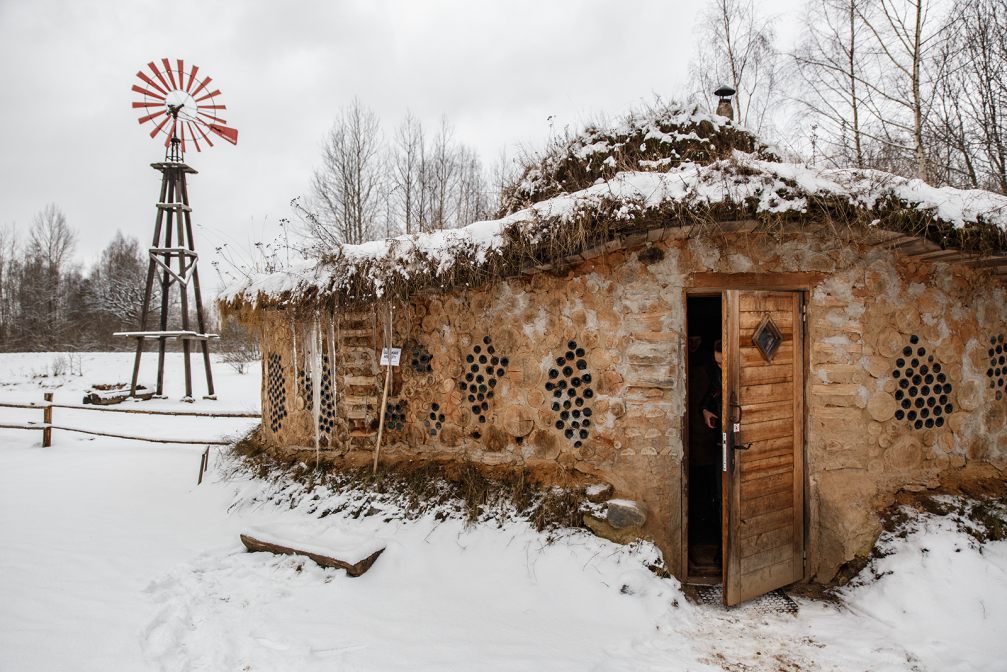
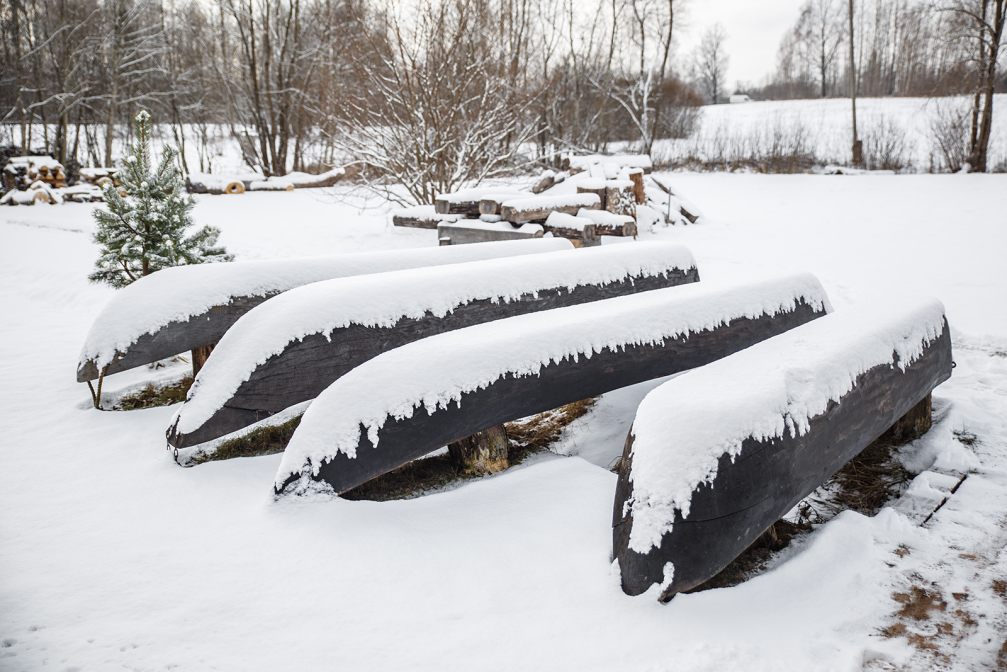
There is a lot of talk about the saving of resources and sustainability as something contemporary design should focus on. What is your take on that?
Rational use of resources is very important. For example, when I create bowls I try to make use of all the suitable material and produce as little surplus as possible. I also use what is left over. Since wood is a renewable natural resource, I can choose what to do with the parts I don’t need. One option is to leave them in the forest to rot, other — to use them as firewood. The shavings are great for compost.
In the Vienkoči Park and in my private life I pay a great attention to recycling. At the same time, my approach isn’t too extreme. I believe that everything should be done reasonably. In my opinion, many issues related to environmental pollution and global warming are exaggerated.
It is undeniable that in the modern age of consumers there are too many things produced that serve too little, are quickly discarded and generate a lot of waste.
How big a role in your broad scope of activity is given to tourism?
I may have put more emphasis on tourism at the beginning, but the Latvian market is very small. It is nice to see more and more people from abroad here. Every now and then we get people who are seriously interested in what we do. For instance, last summer we had a visitor from a ship museum in the Netherlands, who was interested in log–boats. Tourism goes hand in hand with everything else I am doing. In any case, it means not only recreation but research. I let people learn more about woodworking, the history of Ligatne surroundings, its nature and green thinking. Being a wood craftsman, I am engaged in the preservation of skills — the immaterial cultural heritage. I have created a kind of triangle for myself — craftsmanship, science and tourism. In my view, these three form the very core of what I do.
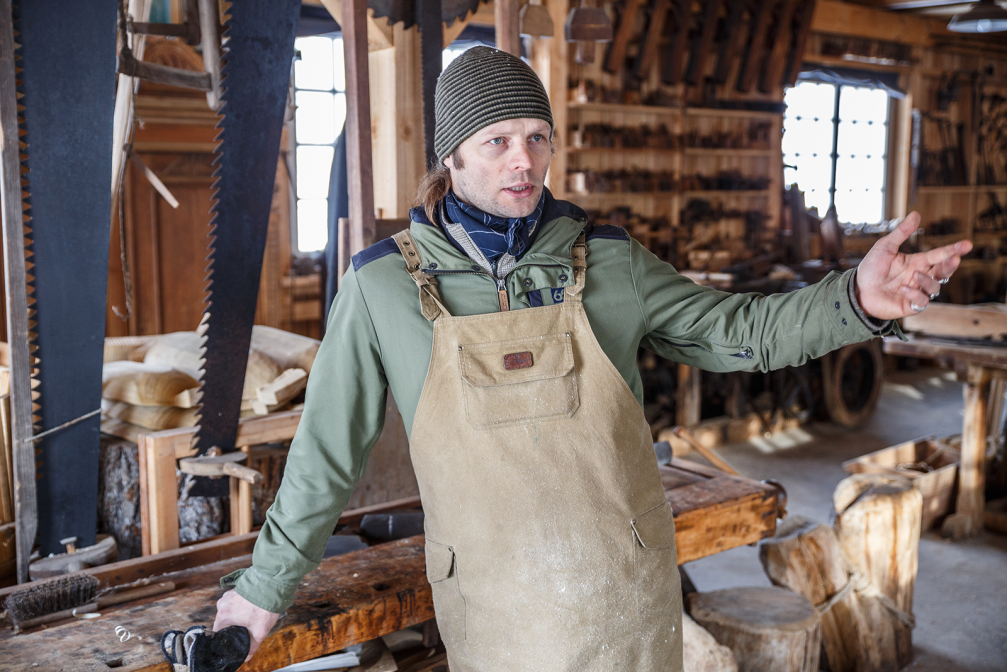

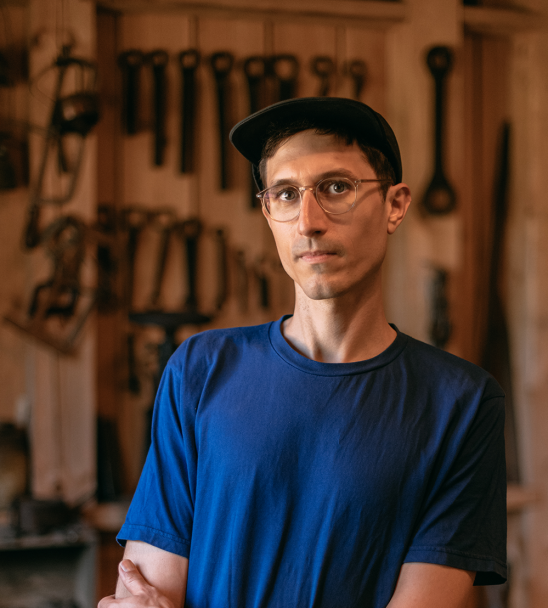


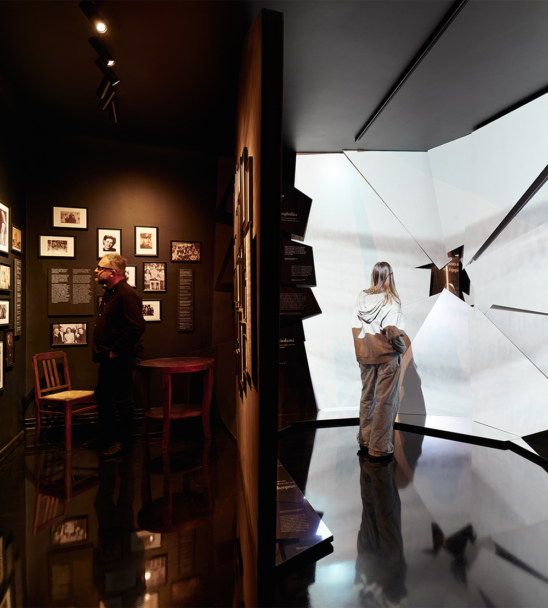
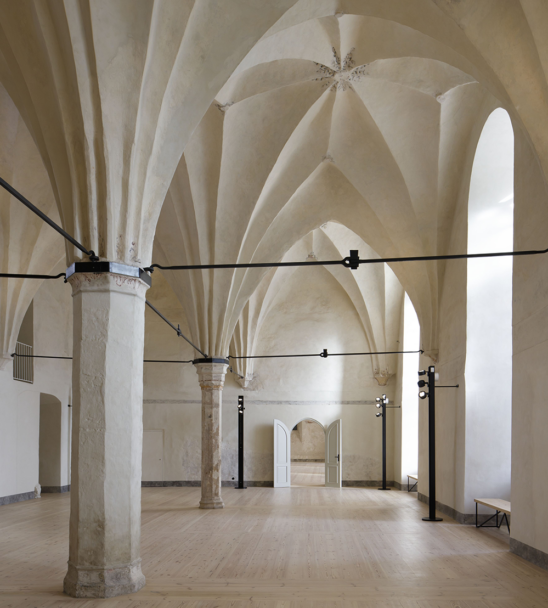
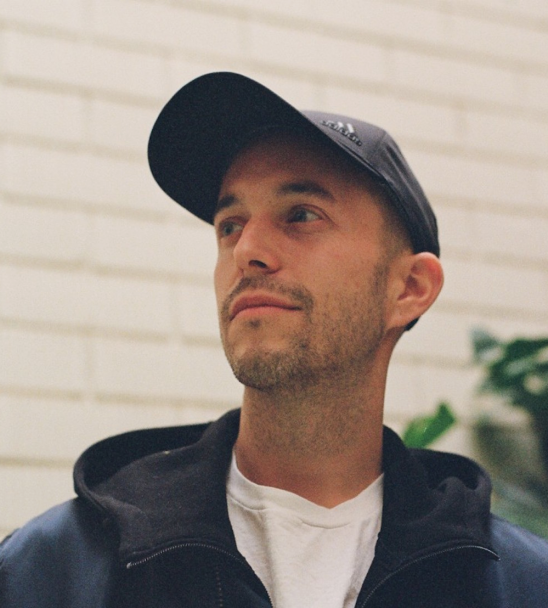
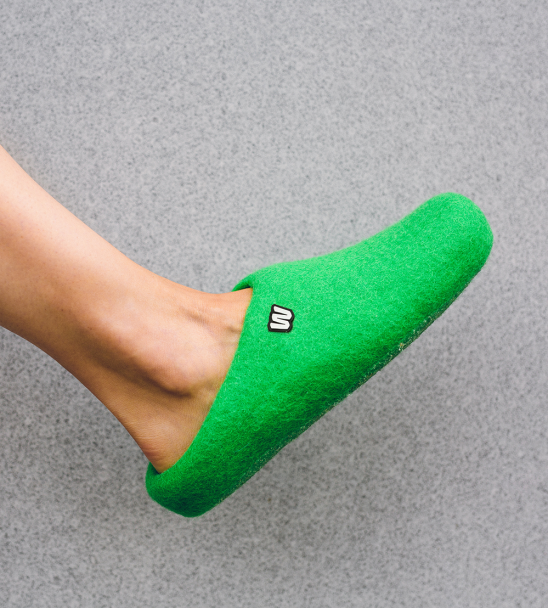
Viedokļi